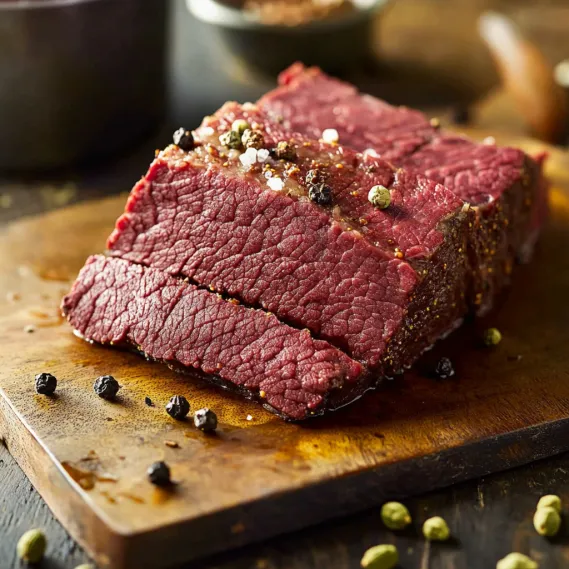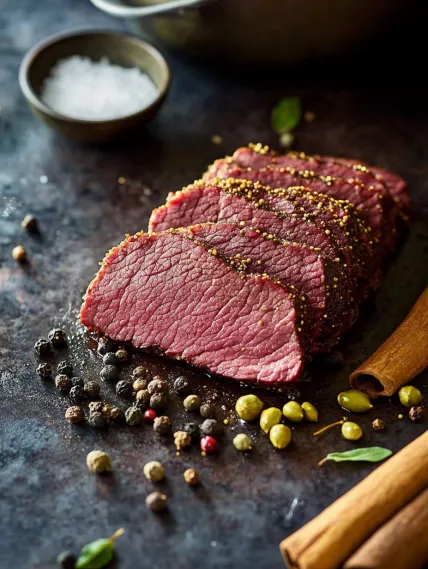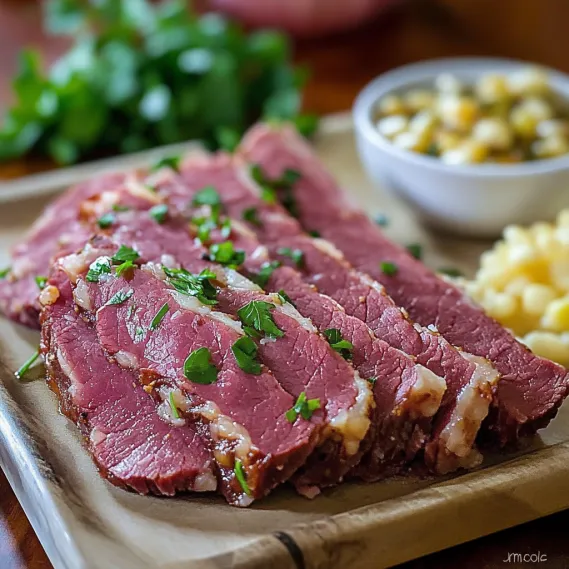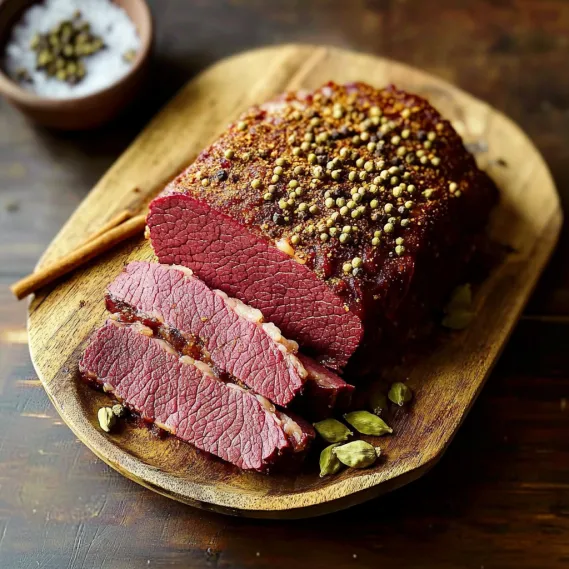 Pin it
Pin it
Making your own Corned Beef at home turns ordinary beef brisket into mouthwatering meat that links you with traditional food preservation methods. The transformation happens while it soaks in brine, as basic meat becomes something special—soft, tasty, and ready for many dishes. You'll find the gap between this and store options makes the wait totally worth it.
I tried making this dish when I needed something fancy but doable for a weekend get-together. After playing around with different types of shrimp and butter mixes, this version became our family favorite. My hubby swears they're the tastiest scampi he's ever had, and now everyone asks for them whenever we host dinner.
Key Ingredients and Shopping Advice
- Beef Brisket: Go for one with good fat running through it; flat cuts give even slices, point cuts pack more taste
- Kosher Salt: Weigh it instead of using cups since brands differ in heaviness
- Pink Curing Salt: Creates that classic pinkish color and helps keep the meat fresh
- Pickling Spices: Making your own mix lets you adjust flavors to your liking
- Brown Sugar: Cuts through the saltiness and supports good bacteria growth
I've noticed that throwing in a bit of chicken powder really changes the game when you want that restaurant-style taste. Don't have any? Just grab some mushroom powder instead—it adds that same deep flavor kick without changing how the food tastes overall.
Step-by-Step Cooking Guide
- Step 1: Mix Your Custom Spices
- Heat up allspice berries, mustard seeds, coriander seeds, red pepper flakes, peppercorns, cloves, and cinnamon pieces. Smash them up and stir with bay leaves, ginger, and extra cinnamon bits for better taste.
- Step 2: Get Your Brine Ready
- Mix water, kosher salt, pink curing salt, brown sugar, and your spice mix. Heat until everything dissolves, then let it cool completely before putting in the fridge.
- Step 3: Soak The Meat
- Put your brisket in the cold brine using a non-metal container. Keep in fridge 5-7 days, turning once daily for even curing. Use something heavy to keep the meat underwater the whole time.
- Step 4: Check If It's Ready
- Wash the brisket well under cold water. Cut off a tiny corner to make sure it's cured all the way through - it should look pink with curing salt or grayish without it.
- Step 5: Cook Until Soft
- Cover the brisket with fresh water, add leftover pickling spice. Bring to a boil, then turn down to a gentle bubble for 3 hours until a fork slides in easily. Let it sit before cutting across the grain.
 Pin it
Pin it
The first time I made this, I learned you can't rush good curing. I cut the soaking time short and ended up with tough, half-cured brisket. Now I always let the meat soak the full time, which gives me that perfect soft, flavorful result every time.
The Magic Behind Meat Curing
Salt pulls water from meat through osmosis while moving into the fibers, making a place where bacteria can't grow well. Sodium nitrite works with the meat proteins, giving that special color while boosting taste and stopping spoilage. This old method changes both how the meat feels and tastes.
 Pin it
Pin it
Making Your Spice Mix Unique
Try adding cinnamon for cozy warmth, orange peels for zingy freshness, juniper berries for woody flavor, or mace for a nutmeg touch. Each addition creates your own special taste while keeping the basic character. You can mix spices ahead and keep them for months.
Ways To Enjoy Beyond March 17th
Stack it in Reuben sandwiches with sauerkraut, chop it for breakfast with potatoes, or stuff it in tacos with pickled cabbage and creamy horseradish. The rich, spiced flavors work surprisingly well in many different dishes.
Fixing Common Problems
If your meat's too salty, soak the cured brisket in cold water before cooking. Meat still tough? Cook it longer to break down the tough bits. Don't worry if you skip pink salt—the meat will just look gray but taste the same.
 Pin it
Pin it
Smart Cook Tricks
- Cook on low heat slowly, then wrap in foil while resting for softness
- Switch some water for dark beer to get richer flavor
- Boil down the cooking water to use when heating leftovers
- Keep the cooking liquid for preparing side vegetables
- Store leftover meat in some of its cooking juice so it won't dry out
Frequently Asked Questions
- → Do I need pink curing salt to make corned beef?
- Pink salt isn’t a must, but it does two things: keeps the beef pink and prevents bacteria during curing. Skip it if you want, but the meat will turn brownish instead of pink. Just keep the beef cool the whole brining time.
- → Can I try corned beef with another beef cut?
- Yes, though brisket is ideal for its marbling and texture. Tough cuts like chuck or round work too. Follow the same brining process, but keep in mind the texture may not be identical.
- → What can I do if I end up with salty corned beef?
- Soak it in cold water for a bit before cooking, swapping out the water every hour. You could also boil it in extra water or avoid salting your veggies during cooking.
- → Can I toss veggies into the pot with the corned beef?
- Sure! Go for classics like cabbage, potatoes, or carrots. Add them in during the last half hour of the beef’s cooking time. The spicy broth flavors them beautifully.
- → How do I keep my corned beef tender?
- Cook it super gently. A slow simmer works best since boiling makes meat tough. Use a slow cooker on low for hours, or toss it in a pressure cooker for faster results. Don’t forget to cut it against the grain for easier bites.
